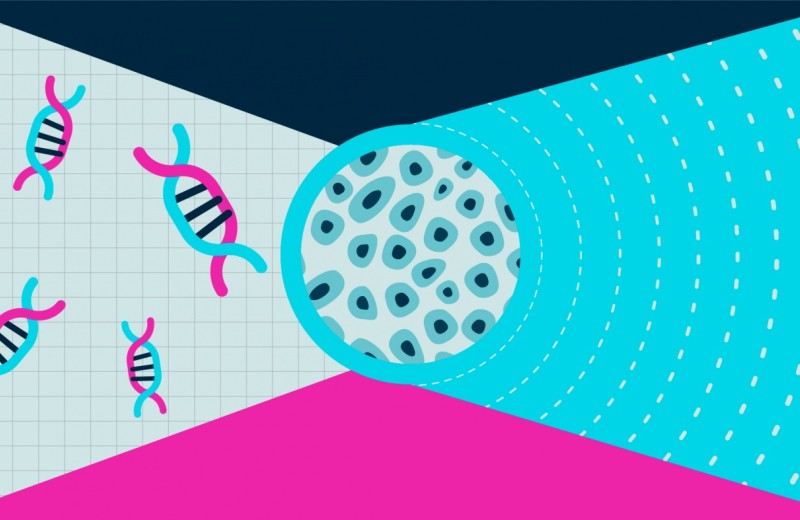Gladstone NOW: The Campaign Join Us on the Journey✕

SAN FRANCISCO, CA—June 28, 2012—Scientists at the Gladstone Institutes and an international team of researchers have generated a human model of Huntington's disease—directly from the skin cells of patients with the disease.
For years, scientists have studied Huntington's disease primarily in post-mortem brain tissue or laboratory animals modified to mimic the disease. Today, in Cell Stem Cell, the international team shows how they developed a human model of Huntington's disease, which causes a diverse range of neurological impairments. The new model should help scientists better understand the development of Huntington's—and provide better ways to identify and screen potential therapeutics for this devastating disease.
This new model comes at a time of concentrated federal efforts to accelerate solutions for diseases—including a number of debilitating conditions that touch only small percentages of the population. Last year, the National Institutes of Health consolidated its efforts to attack rare diseases under the new National Center for Translational Sciences.
Huntington's is such a rare disease, although it is the most common inherited neurodegenerative disorder. It afflicts approximately 30,000 people in the United States—with another 75,000 people carrying the gene that will eventually lead to it. Caused by a mutation in the gene for a protein called huntingtin, the disease damages brain cells so that people with Huntington's progressively lose their ability to walk, talk, think and reason.
“An advantage of this human model is that we now have the ability to identify changes in brain cells over time—during the degeneration process and at specific stages of brain-cell development,” said Gladstone Senior Investigator Steve Finkbeiner, MD, PhD. “We hope this model will help us more readily uncover relevant factors that contribute to Huntington's disease and especially to find successful therapeutic approaches.”
In this research, Dr. Finkbeiner and others took advantage of advanced “reprogramming” techniques pioneered by Gladstone Senior Investigator Shinya Yamanaka, MD, PhD. They reprogrammed skin cells from Huntington's disease patients into stem cells known as induced pluripotent stem cells, or iPS cells—which can become virtually any cell type in the body. The researchers then instructed the iPS cells to develop into neurons, a key type of brain cell. Importantly, each cell line contained a complete set of the genes from each Huntington's disease patient. Because each patient has a different pattern of disease onset and duration, this model may replicate Huntington's more faithfully than animal models do. The model is likely to prove more useful in understanding the disease's progression.
“The iPS cells will provide insights into Huntington's disease, helping us to develop new therapies and test drug candidates,” said Dr. Finkbeiner, who is also a professor of neurology and physiology at the University of California, San Francisco, with which Gladstone is affiliated. “We hope that drugs developed with this new human model will have greater success in clinical trials. The track record of animal models for predicting therapies that will work in people has been poor, making drug discovery for neurodegenerative diseases very costly—and therefore less attractive to drug companies. We hope to change that.”
Other scientists who participated in this research at Gladstone include Julia A. Kaye, PhD, Aaron Daub and Amanda Mason. The consortium research group included investigators at the University of Wisconsin, Cedars-Sinai Medical Center, Massachusetts General Hospital, the University of California, Irvine, the University of Milan, Johns Hopkins University and Cardiff University. Funding for this research came from the National Institute of Neurological Disorders and Stroke. Additional support came from a variety of sources, including the California Institute for Regenerative Medicine, and The Taube-Koret Center for Huntington's Disease Research, The Hellman Family Foundation Alzheimer's Research Program and The Roddenberry Center for Stem Cell Biology and Medicine—all at Gladstone.
About the Gladstone Institutes
Gladstone is an independent and nonprofit biomedical-research organization dedicated to accelerating the pace of scientific discovery and innovation to prevent, treat and cure cardiovascular, viral and neurological diseases. Gladstone is affiliated with the University of California, San Francisco.
Support Discovery Science
Your gift to Gladstone will allow our researchers to pursue high-quality science, focus on disease, and train the next generation of scientific thought leaders.
Meet Gladstone: Julia Kaye
Meet Gladstone: Julia Kaye
Julia Kaye is a neuroscientist at Gladstone Institutes dedicated to unraveling the mysteries of neurodegenerative diseases. Outside the lab, Kaye enjoys skateboarding, surfing, and exploring nature with her family.
Profile ALS Huntington’s Disease Multiple Sclerosis Neurological Disease KayeConnecting the Dots: From Stem Cells to Human Health
Connecting the Dots: From Stem Cells to Human Health
Since Shinya Yamanaka discovered a method to create human induced pluripotent stem (iPS) cells, Gladstone researchers have built on this technology to create numerous iPS cell lines, coax iPS cells into a myriad of tissue types, use them as a tool to study disease, and even begin creating therapies using these cells.
Research (Publication) Stem Cell Core Alzheimer’s Disease Huntington’s Disease Finkbeiner Lab Huang Lab McDevitt Lab Srivastava Lab Yamanaka Lab CRISPR/Gene EditingTaube Philanthropies Announces $3 Million Gift to Stanford Medicine and Gladstone Institutes for Huntington’s Disease Research
Taube Philanthropies Announces $3 Million Gift to Stanford Medicine and Gladstone Institutes for Huntington’s Disease Research
The funded program will, for the first time, introduce gene editing and stem cell therapies in the search for a potential cure
Huntington’s Disease Finkbeiner Lab



